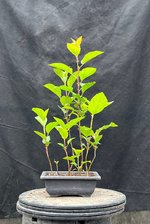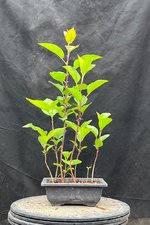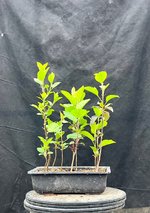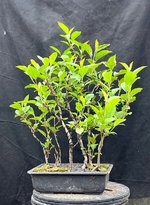Eckhoffw
Masterpiece
Decided to create this thread to document my findings and development with regular old grocery store, apple seeds.
The majority of mine, I believe to be Honeycrisp, sweet tango, or pink lady, as those are our families faves.
I can find a lot of information on crabapple bonsai, but there’s much less on regular apple. I understand there’s probably a lot of crossover., but would love to hear if anyone has knowledge with the domestica varieties.
Here are what they look like today.
Batch 3 - 2nd season


Batch 2 -3rd season:


Batch 1 -4th season
I Currently have another tray inside under lights for batch 4. I will separate that tray and develop as some single trees.
The majority of mine, I believe to be Honeycrisp, sweet tango, or pink lady, as those are our families faves.
I can find a lot of information on crabapple bonsai, but there’s much less on regular apple. I understand there’s probably a lot of crossover., but would love to hear if anyone has knowledge with the domestica varieties.
Here are what they look like today.
Batch 3 - 2nd season


Batch 2 -3rd season:


Batch 1 -4th season

I Currently have another tray inside under lights for batch 4. I will separate that tray and develop as some single trees.


